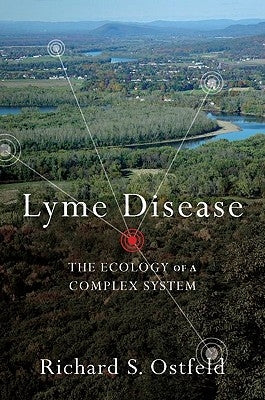1
/
of
1
Oxford University Press, USA
Lyme Disease: The Ecology of a Complex System
Lyme Disease: The Ecology of a Complex System
Regular price
€55,95 EUR
Regular price
Sale price
€55,95 EUR
Shipping calculated at checkout.
Quantity
Couldn't load pickup availability
Most human diseases come from nature, from pathogens that live and breed in non-human animals and are accidentally transmitted to us. Human illness is only the culmination of a complex series of interactions among species in their natural habitats. To avoid exposure to these pathogens, we
must understand which species are involved, what regulates their abundance, and how they interact. Lyme disease affects the lives of millions of people in the US, Europe, and Asia. It is the most frequently reported vector-borne disease in the United States; About 20,000 cases have been reported each year over the past five years, and tens of thousands more go unrecognized and unreported. Despite
the epidemiological importance of understanding variable LD risk, such pursuit has been slow, indirect, and only partially successful, due in part to an overemphasis on identifying the small subset of 'key players' that contribute to Lyme disease risk, as well as a general misunderstanding of
effective treatment options. This controversial book is a comprehensive, synthetic review of research on the ecology of Lyme disease in North America. It describes how humans get sick, why some years and places are so risky and others not. It challenges dogma - for instance, that risk is closely tied to the abundance of deer -
and replaces it with a new understanding that embraces the complexity of species and their interactions. It describes why the place where Lyme disease emerged - coastal New England - set researchers on mistaken pathways. It shows how tiny acorns have enormous impacts on our probability of getting
sick, why biodiversity is good for our health, why living next to a small woodlot is dangerous, and why Lyme disease is an excellent model system for understanding many other human and animal diseases. Intended for an audience of professional and student ecologists, epidemiologists, and other health
scientists, it is written in an informal style accessible also to non-scientists interested in human health and conservation.
Author: Richard Ostfeld
Publisher: Oxford University Press, USA
Published: 11/10/2010
Pages: 232
Binding Type: Hardcover
Weight: 1.00lbs
Size: 9.30h x 6.10w x 0.70d
ISBN: 9780195388121
must understand which species are involved, what regulates their abundance, and how they interact. Lyme disease affects the lives of millions of people in the US, Europe, and Asia. It is the most frequently reported vector-borne disease in the United States; About 20,000 cases have been reported each year over the past five years, and tens of thousands more go unrecognized and unreported. Despite
the epidemiological importance of understanding variable LD risk, such pursuit has been slow, indirect, and only partially successful, due in part to an overemphasis on identifying the small subset of 'key players' that contribute to Lyme disease risk, as well as a general misunderstanding of
effective treatment options. This controversial book is a comprehensive, synthetic review of research on the ecology of Lyme disease in North America. It describes how humans get sick, why some years and places are so risky and others not. It challenges dogma - for instance, that risk is closely tied to the abundance of deer -
and replaces it with a new understanding that embraces the complexity of species and their interactions. It describes why the place where Lyme disease emerged - coastal New England - set researchers on mistaken pathways. It shows how tiny acorns have enormous impacts on our probability of getting
sick, why biodiversity is good for our health, why living next to a small woodlot is dangerous, and why Lyme disease is an excellent model system for understanding many other human and animal diseases. Intended for an audience of professional and student ecologists, epidemiologists, and other health
scientists, it is written in an informal style accessible also to non-scientists interested in human health and conservation.
Author: Richard Ostfeld
Publisher: Oxford University Press, USA
Published: 11/10/2010
Pages: 232
Binding Type: Hardcover
Weight: 1.00lbs
Size: 9.30h x 6.10w x 0.70d
ISBN: 9780195388121
About the Author
Rick Ostfeld is Senior Scientist and Animal Ecologist at the Cary Institute of Ecosystem Studies, Millbrook, New York.
This title is not returnable
Share


